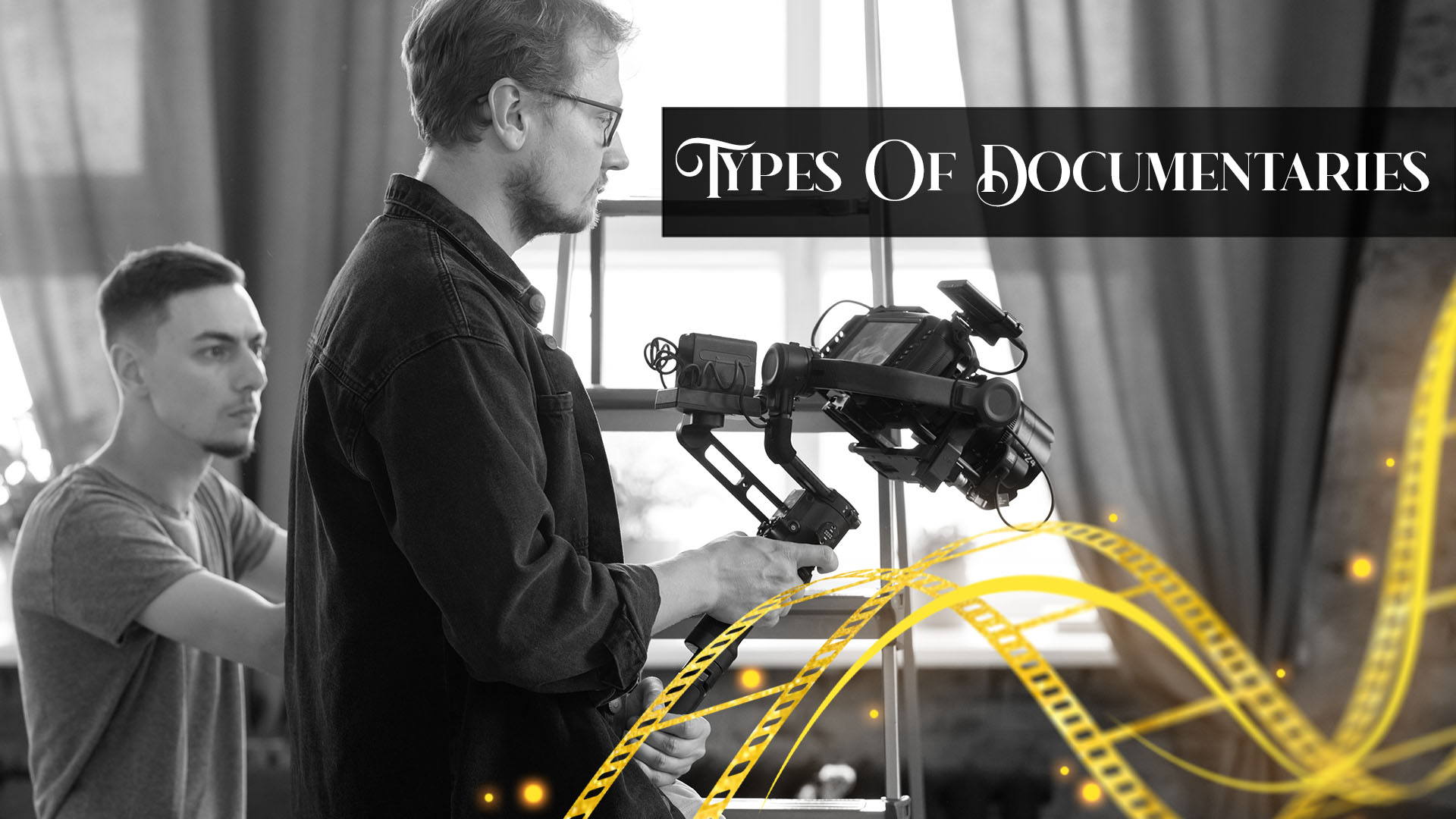Types of Documentaries
Documentaries have been there since the dawn of filmmaking. They serve as a powerful medium to capture and unveil the raw reality, presenting it, in its purest and most authentic form. They offer the window into the truth striped off any filters or pretense.
Robert Flaherty’s “Nanook of the North” released in 1922 is considered to be the first original documentary. It chronicles the journey of Inuit hunter “Nanook” and his family who struggles for survival in the Hudson Bay of Canada. The documentary has truly made a mark, leaving a lasting impression on the viewers. Its impact is evident as people continue to discuss it and it serves as a reference point for other documentary filmmakers.
In this blog we will dive into the captivating world of documentaries and explore the fascinating realm of the different types and modes they come in.
For aspiring filmmakers grasping the various forms of documentaries is essential. These include poetic, expository, observational, reflexive, participatory, and performative documentaries. By understanding these types of documentaries filmmakers can select the right approach to convey their stories more effectively. It’s a crucial foundation for creating impactful and engaging documentaries.
SIX MAJOR TYPS OF DOCUMENTARIES
POETIC DOCUMENTARIES: Poetic documentaries are a unique breed as their purpose is to weave a story without relying on additional verbal context. They strive to create a poetic mood embracing abstract and loose narrative. More often than not poetic documentaries are experimental in form and content. Through visually striking and rhythmic images poetic documentaries invite the viewers to see the world through a poetic lens so as to invoke a mood or feeling. The French documentary Night and Fog directed by Alain Resnais is a major example of a Poetic Documentary.
OBSERVATIONAL DOCUMENTARIES: Observational documentaries also known as “fly-on-the-wall” documentaries aim to observe and capture the reality without disturbing or influencing it. These documentaries strive to present the unbiased and unfiltered view of the subject matter. To achieve this, filmmakers often used handheld cameras to create an intimate and immersive experience for the viewers. The setting for observational documentaries can be very widely, ranging from everyday life situations to specific events or locations. Through this unobtrusive approach, these documentaries allow us to witness the world as it unfolds naturally, offering a raw and authentic glimpse into different aspects of life. Salesman, a 1969 documentary film, directed by brothers Albert and David Maysles and Charlotte Zwerin serves as a major example of an Observational Documentary.
EXPOSITORY DOCUMENTARIES: Expository documentaries feature a clear narrative structure and aim to present a strong argument through the film. They often include expert interviews, factual data and research to support their purpose. These documentaries strive to inform and educate viewers by providing a comprehensive analysis of a particular subject or issue. With a focus on creating a well-structured argument, expository documentaries offer a compelling and persuasive perspective on the topic at hand.
REFLEXIVE DOCUMENTARIES: Reflexive Documentaries like Meta Documentaries aims to explore the process of filmmaking itself. The purpose is to question the truth, reflection and the filmmaker’s role in shaping the narrative. These documentaries incorporate self-reflection and self-awareness often blurring the lines between fiction and reality. Filming techniques include breaking the fourth wall, including behind the scenes footage and often incorporating the filmmaker’s own commentary within the film. Through these introspective approach, reflexive documentaries encourage viewers to critically examine the medium of documentary filmmaking and challenge their own perceptions.
PARTICIPATORY DOCUMENTARIES: In, participatory documentaries such as Bowling for Columbine (2002) filmmakers actively engage with the subject matter often becoming a part of the story. Their perspective and involvement provide a personal connection to the narrative. Filmmakers might use techniques such as first-person narration, on-screen interaction and collaborative story-telling to create a sense of shared experience. By immersing themselves in the story participatory documentaries aims to foster empathy and understanding thus allowing for a more subjective exploration of the topic at hand.
PERFORMATIVE DOCUMENTARIES: Performative Documentaries utilize the personal relationship between the subject and the filmmaker to delve into broader concepts of politics, history or different groups of people. These documentaries focus on the performative aspects of the subject’s life, exploring their experiences and perspectives in a subjective manner. By showcasing the subject’s unique presence performative documentaries challenge the traditional notions of objectivity in storytelling. The filmmaking process involves collaboration between the subject and the filmmaker resulting in deeply thought-provoking explorations of larger societal issues.
Documentaries have become a powerful medium for exploring a wide range of subjects and capturing real-life stories. Today, with the rise of documentary film festivals, these films are given a worldwide platform to reach audiences and create significant impact. Documentary filmmakers often seek out Upcoming International Documentary Film Festivals and Popular Film Festivals to showcase their work, allowing their stories to be appreciated by diverse audience and fostering conversations on important global issues
Modes of Documentaries





